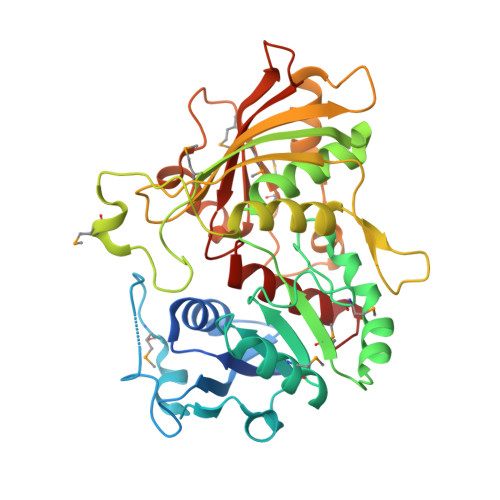Structural Insights into the Tetrameric State of Aspartate-beta-semialdehyde Dehydrogenases from Fungal Species
Li, Q., Mu, Z., Zhao, R., Dahal, G., Viola, R.E., Liu, T., Jin, Q., Cui, S.(2016) Sci Rep 6: 21067-21067
- PubMed: 26869335
- DOI: https://doi.org/10.1038/srep21067
- Primary Citation of Related Structures:
4ZHS, 4ZIC - PubMed Abstract:
Aspartate-β-semialdehyde dehydrogenase (ASADH) catalyzes the second reaction in the aspartate pathway, a pathway required for the biosynthesis of one fifth of the essential amino acids in plants and microorganisms. Microarray analysis of a fungal pathogen T. rubrum responsible for most human dermatophytoses identified the upregulation of ASADH (trASADH) expression when the fungus is exposed to human skin, underscoring its potential as a drug target. Here we report the crystal structure of trASADH, revealing a tetrameric ASADH with a GAPDH-like fold. The tetramerization of trASADH was confirmed by sedimentation and SAXS experiments. Native PAGE demonstrated that this ASADH tetramerization is apparently universal in fungal species, unlike the functional dimer that is observed in all bacterial ASADHs. The helical subdomain in dimeric bacteria ASADH is replaced by the cover loop in archaeal/fungal ASADHs, presenting the determinant for this altered oligomerization. Mutations that disrupt the tetramerization of trASADH also abolish the catalytic activity, suggesting that the tetrameric state is required to produce the active fungal enzyme form. Our findings provide a basis to categorize ASADHs into dimeric and tetrameric enzymes, adopting a different orientation for NADP binding and offer a structural framework for designing drugs that can specifically target the fungal pathogens.
- MOH key Laboratory of Systems Biology of Pathogens, Institute of Pathogen Biology, Chinese Academy of Medical Sciences &Peking Union Medical College, No.9 Dong Dan San Tiao, Beijing 100730.
Organizational Affiliation:


















